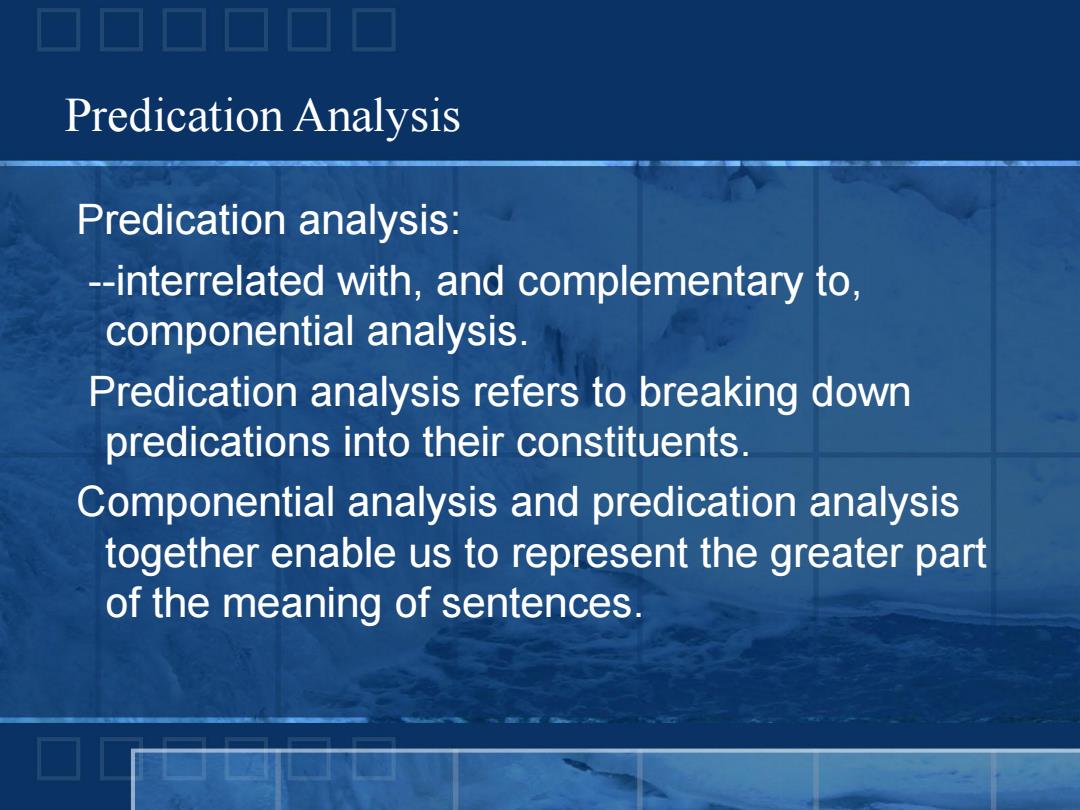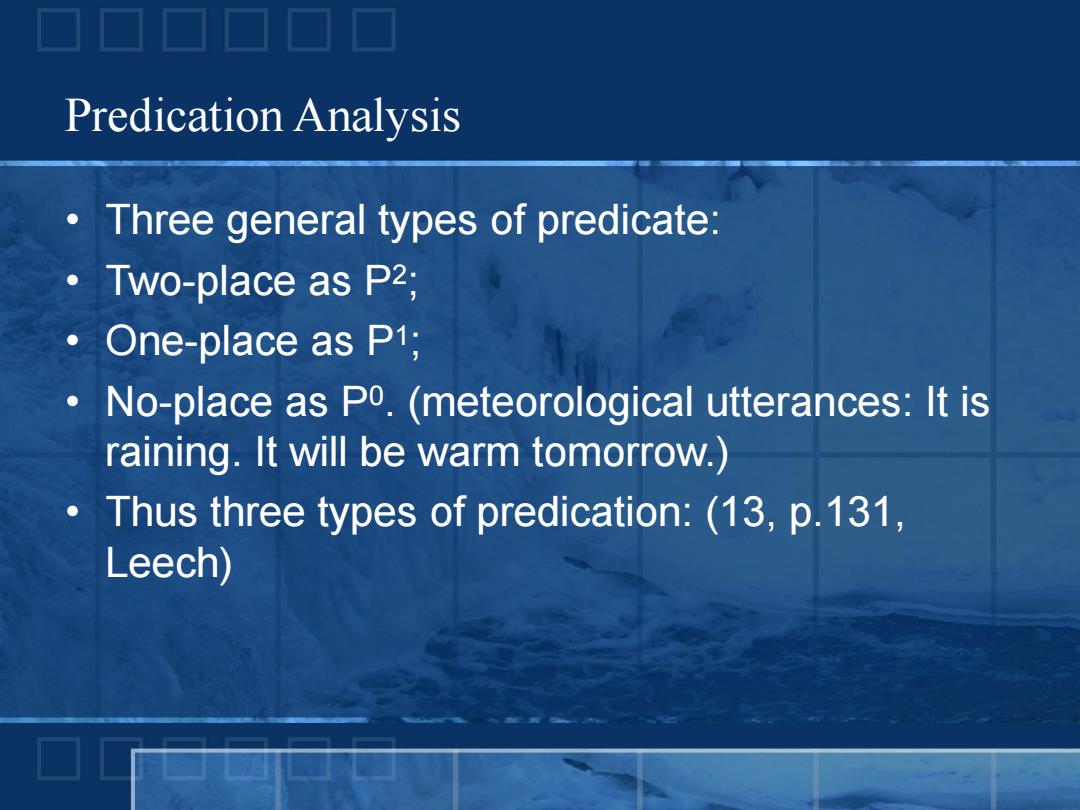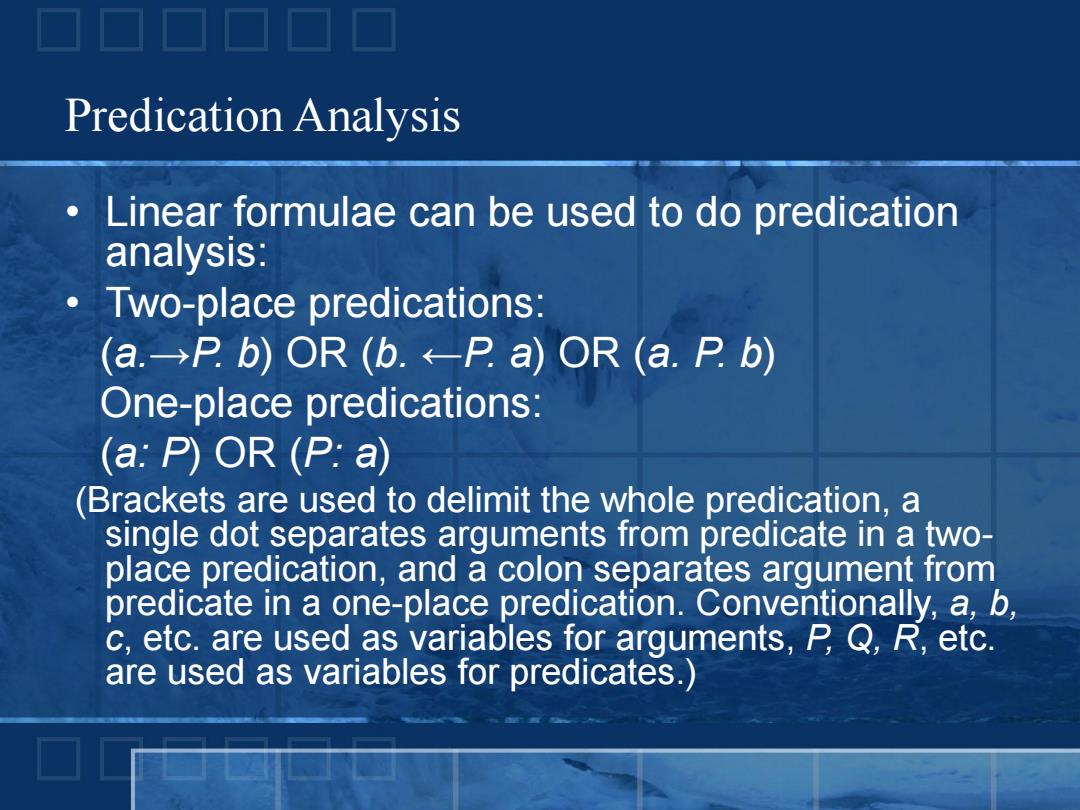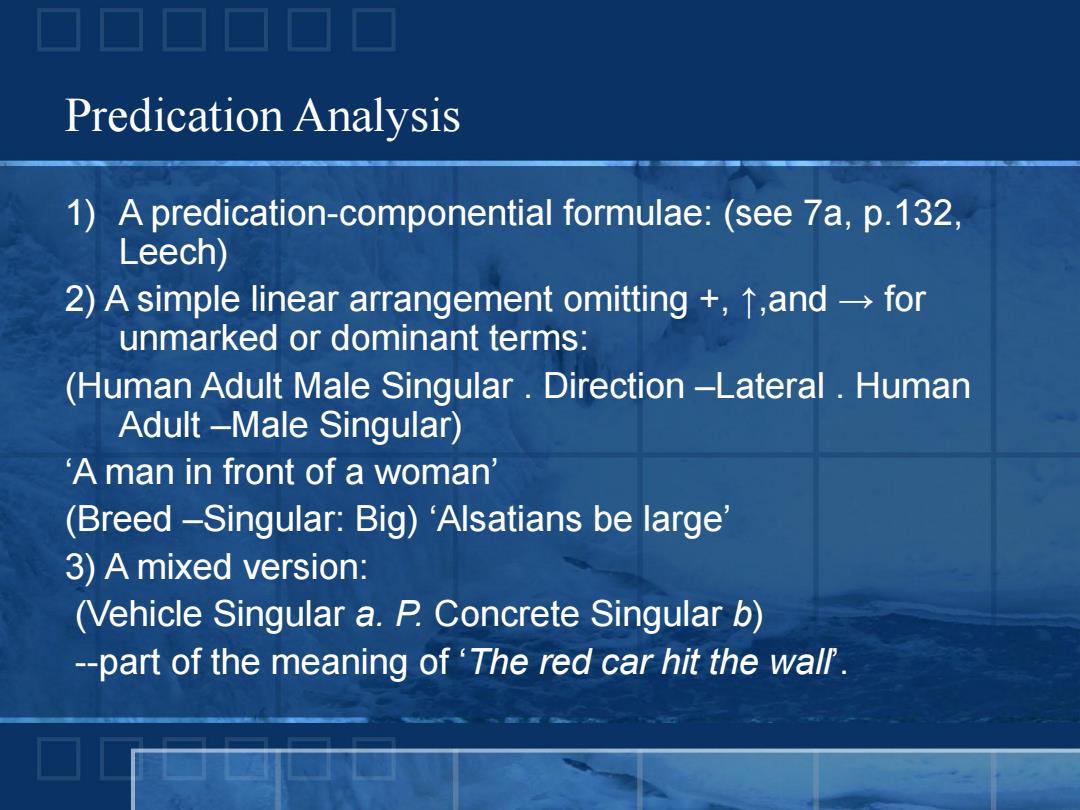
Predications,Arguments and Predicates The above example:the relational meaning of 'in front of requires the presence of two arguments which can be placed in a spatial relationship. One-place predicate (monadic)governs one argument (typically realized by a nominal or adjectival complement or conveyed by intransitive verbs).(see 9-11,Leech, p.130) Two-place predicate (dyadic)governs two arguments (see 8,Leech,p.129) Three-place predicate (triadic)govern three arguments (typically realized by the ditransitive verbs,combination of two-place and one-place)
• The above example: the relational meaning of ‘in front of’ requires the presence of two arguments which can be placed in a spatial relationship. • One-place predicate (monadic) governs one argument (typically realized by a nominal or adjectival complement or conveyed by intransitive verbs). (see 9—11, Leech, p.130) • Two-place predicate (dyadic) governs two arguments. (see 8, Leech, p.129) • Three-place predicate (triadic) govern three arguments (typically realized by the ditransitive verbs, combination of two-place and one-place). Predications, Arguments and Predicates

Predication Analysis Predication analysis: --interrelated with,and complementary to, componential analysis. Predication analysis refers to breaking down predications into their constituents. Componential analysis and predication analysis together enable us to represent the greater part of the meaning of sentences
Predication analysis: --interrelated with, and complementary to, componential analysis. Predication analysis refers to breaking down predications into their constituents. Componential analysis and predication analysis together enable us to represent the greater part of the meaning of sentences. Predication Analysis

Predication Analysis Three general types of predicate: Two-place as P2; One-place as P1; No-place as Po.(meteorological utterances:It is raining.It will be warm tomorrow.) Thus three types of predication:(13,p.131, Leech)
Predication Analysis • Three general types of predicate: • Two-place as P2; • One-place as P1; • No-place as P0. (meteorological utterances: It is raining. It will be warm tomorrow.) • Thus three types of predication: (13, p.131, Leech)

Predication Analysis Linear formulae can be used to do predication analysis: Two-place predications: (a.-P.b)OR (b.<P.a)OR (a.P.b) One-place predications: (a:P)OR (P:a) (Brackets are used to delimit the whole predication,a single dot separates arguments from predicate in a two- place predication,and a colon separates argument from predicate in a one-place predication.Conventionally,a,b, c,etc.are used as variables for arguments,P Q,R,etc. are used as variables for predicates.)
• Linear formulae can be used to do predication analysis: • Two-place predications: (a.→P. b) OR (b. ←P. a) OR (a. P. b) One-place predications: (a: P) OR (P: a) (Brackets are used to delimit the whole predication, a single dot separates arguments from predicate in a two- place predication, and a colon separates argument from predicate in a one-place predication. Conventionally, a, b, c, etc. are used as variables for arguments, P, Q, R, etc. are used as variables for predicates.) Predication Analysis

Predication Analysis 1)A predication-componential formulae:(see 7a,p.132, Leech) 2)A simple linear arrangement omitting+,↑,and→for unmarked or dominant terms: (Human Adult Male Singular.Direction-Lateral Human Adult-Male Singular) 'A man in front of a woman' (Breed-Singular:Big)'Alsatians be large 3)A mixed version: (Vehicle Singular a.P Concrete Singular b) --part of the meaning of 'The red car hit the wall
Predication Analysis 1) A predication-componential formulae: (see 7a, p.132, Leech) 2) A simple linear arrangement omitting + , ↑,and → for unmarked or dominant terms: (Human Adult Male Singular . Direction –Lateral . Human Adult –Male Singular) ‘A man in front of a woman’ (Breed –Singular: Big) ‘Alsatians be large’ 3) A mixed version: (Vehicle Singular a. P. Concrete Singular b) --part of the meaning of ‘The red car hit the wall’